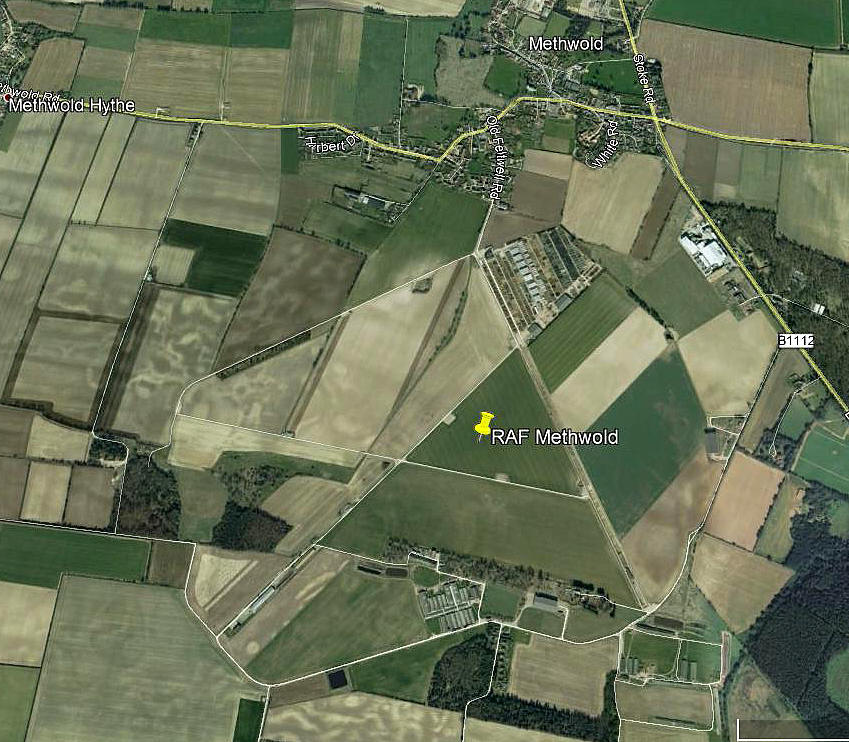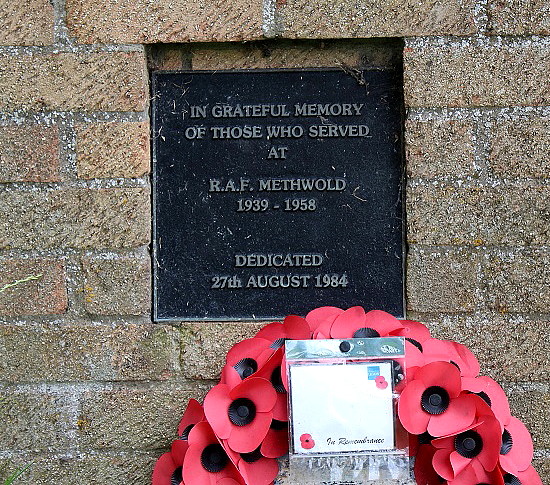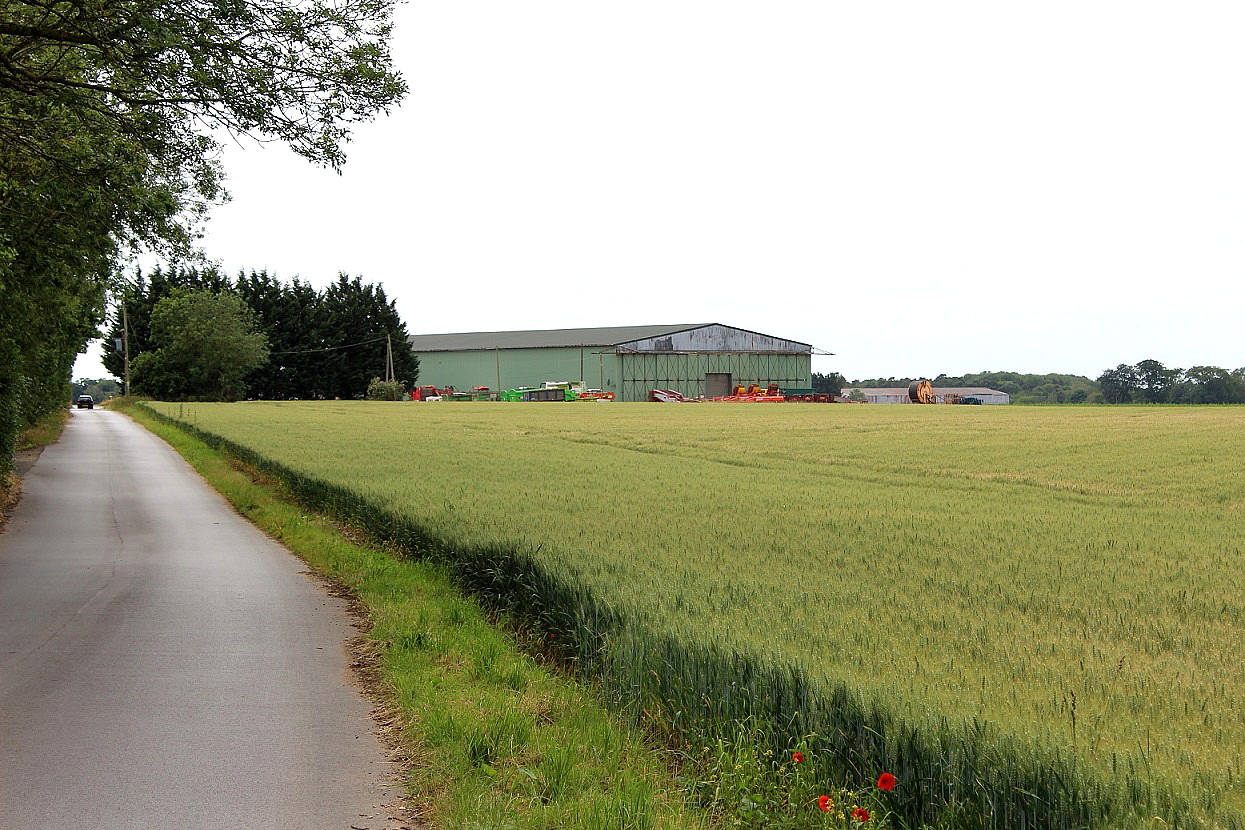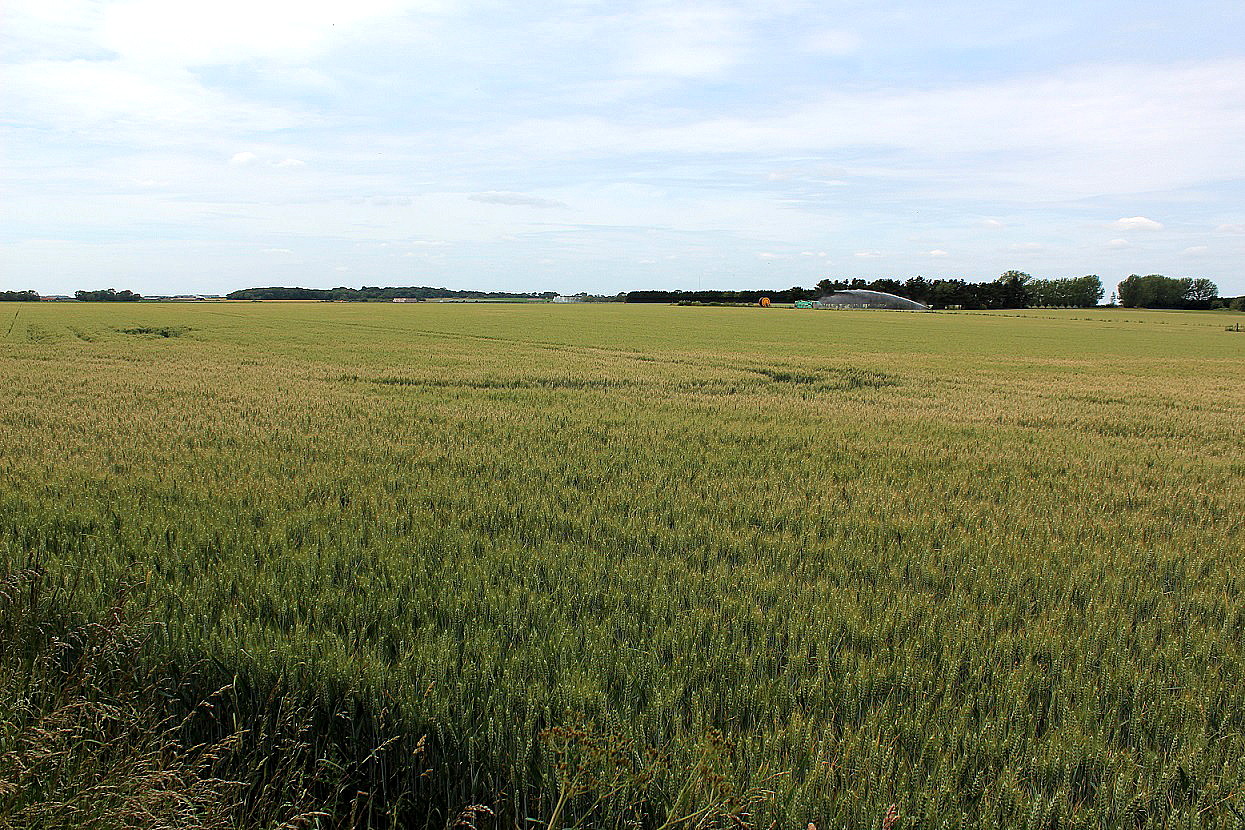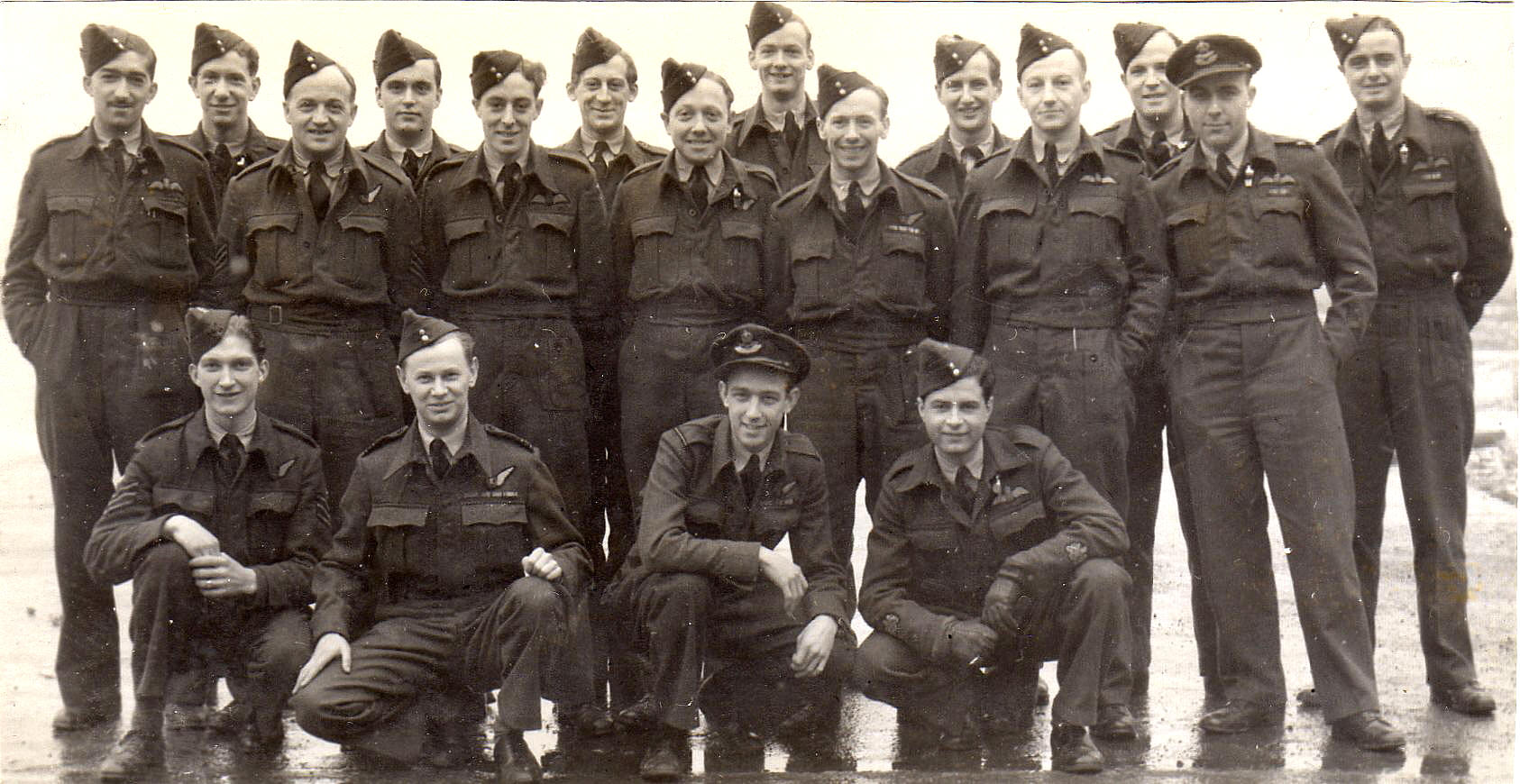Methwold
METHWOLD: Military WW1 NLG (Night Landing Ground) & WW2 RLG (Relief Landing Ground) for nearby RAF FELTWELL
Note: This picture was obtained from Google Earth ©
Notes: All pictures by the author and taken in June 2015. The first picture is of the rather modest memorial on the Green in Methwold village. The second picture is of one of two WW2 hangars that still exist at METHWOLD. The third picture shows how a large part of the WW2 airfield appeared in 2015, and typical of so many WW2 airfields in this region of the UK, this part is now dedicated to agriculture. Further west, and presumably taking advantage of the hard standings and aprons, there is now a large battery farm for chickens, and/or turkey production.The fourth picture is of runway 16/34 which still exists, albiet devoted to open storage of agricultural produce and by-products.
Military users: WW1: RFC 51 (Home Defence) Sqdn
WW2: RAF Bomber Command 2 Group 3 Group
21 Sqdn (Lockheed Venturas, later DH Mosquitos)
Note: It appears that some records stating that 21 Squadron flew North American B-25 Mitchells after the Venturas is not correct. See 'comment' below.
37 & 214 Sqdns (Vickers Wellingtons)
149 (East Indies) Sqdn (Short Stirlings later Avro Lancasters)
218 (Gold Coast) Sqdn (Lancasters)
487 RNZAF & 464 RAAF Sqdns (Lockheed Venturas)
Coastal Command: 320 (Netherlands) Sqdn (Lockheed Hudsons)
Note: It appears that as 320 Sqdn were later operating North American B-25 Mitchells, they may well have been transferred to 2 Group, Bomber Command.
20 Glider Maintenance Unit (Horsas)
POST WW2
207 Sqdn (Avro Lancasters)
Note: This picture, taken in 1946, was kindly sent by Jim Eley who flew Lancasters at the end of WW2.
Location: W of B1106, S of Methwold & SE of Hythe, 5nm NW of Brandon
Period of operation: WW1: 1916 only it seems RLG for FELTWELL pre-war. 1939 to 1958 as aerodrome
Runways: WW2: 05/23 1829x46 hard 11/29 1280x46 hard
16/34 1280x46 hard
NOTES: As always the question must be asked - did the WW1 airfield occupy the same site as the WW2 site?
THE 'CINDERELLA SERVICE'
Perhaps this is yet another suitable location to draw attention, once again in this Guide - to the ‘Cinderella Service’ – Coastal Command. Whilst all the glory goes to Fighter Command, and latterly some recognition of Bomber Command, the duties performed by Coastal Command is a subject still largely ignored. A few of their exemplary exploits do get posted but by and large they do not figure on the ‘public radar’ these days. However, the more I looked into the history of Coastal Command the more I became, and still become, ever more impressed. In terms of sheer grit and bravery the crews of Coastal Command have every reason to regard themselves as at least equal to both Fighter and Bomber Command.
In late 1944 METHWOLD was a ‘Middle of the road’ base with 1350 RAF personnel plus only 66 WAAFs.
Trevor Ford
This comment was written on: 2017-08-02 21:56:10My father, Edward William Ford served in the RAF during WW2, being based at Methwold, Mildenhall, Lakenheath and, I believe, a couple of other satellite airfields unknown to me in the area. I suppose he could be called ground crew, setting up camera equipment in the bombers and then processing the film in order to analyse the photographs automatically taken as bombs were released. The results when studied would show which targets had been successfully hit. My father died 13.3.2013 age 93. Trevor Ford (Son).
Reply from Dick Flute:
Hi Trevor, Many thanks for this memory. The work your father did was of utmost importance during the WW2 bombing campaign. During the initial years the degree of bombing accuracy by the RAF was mostly abysmal - very few bombs hitting the target. When this was finally realised several methods were introduced to enable the bomber crews to hit their targets, and the results really did start to hit home. With devastating results, which of course after the Blitz campaign was totally justified. My best regards, Dick
Terence Fox
This comment was written on: 2017-09-28 11:40:28Hi, just a quick observation regarding aircraft operated by 21 Sqn. the Squadron did not operate the B-25 Mitchell; following the Ventura, 21 Sqn re-equipped with the DH.Mosquito FB.VI, taking part in a number of the well-known low-level attacks, including one of the last of WW2, against Gestapo HQ in Shell House, Copenhagen (returning from France to launch from Fersfield).
Reply from Dick Flute:
Hi Terence, Thank you for this information. I shall amend the record and keep your comment posted. Best regards, Dick
We'd love to hear from you, so please scroll down to leave a comment!
Leave a comment ...
Copyright (c) UK Airfield Guide














